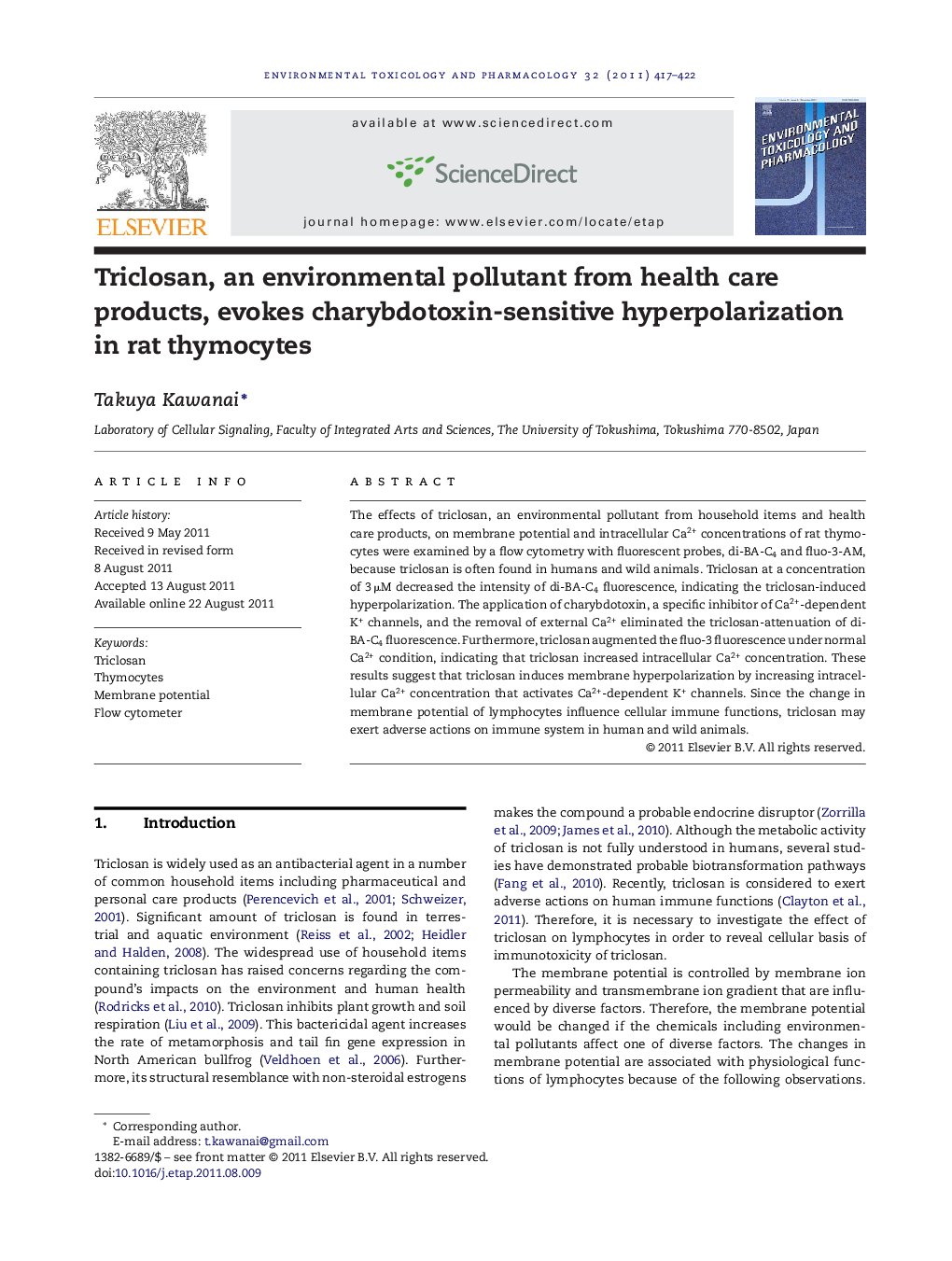| Article ID | Journal | Published Year | Pages | File Type |
|---|---|---|---|---|
| 2583642 | Environmental Toxicology and Pharmacology | 2011 | 6 Pages |
The effects of triclosan, an environmental pollutant from household items and health care products, on membrane potential and intracellular Ca2+ concentrations of rat thymocytes were examined by a flow cytometry with fluorescent probes, di-BA-C4 and fluo-3-AM, because triclosan is often found in humans and wild animals. Triclosan at a concentration of 3 μM decreased the intensity of di-BA-C4 fluorescence, indicating the triclosan-induced hyperpolarization. The application of charybdotoxin, a specific inhibitor of Ca2+-dependent K+ channels, and the removal of external Ca2+ eliminated the triclosan-attenuation of di-BA-C4 fluorescence. Furthermore, triclosan augmented the fluo-3 fluorescence under normal Ca2+ condition, indicating that triclosan increased intracellular Ca2+ concentration. These results suggest that triclosan induces membrane hyperpolarization by increasing intracellular Ca2+ concentration that activates Ca2+-dependent K+ channels. Since the change in membrane potential of lymphocytes influence cellular immune functions, triclosan may exert adverse actions on immune system in human and wild animals.
► Triclosan is an antibacterial in health care and household products. ► Triclosan evokes charybdotoxin-sensitive hyperpolarization in rat thymocytes. ► The hyperpolarization is dependent on the increase in intracellular Ca2+. ► Triclosan may affect cellular functions of lymphocytes.
